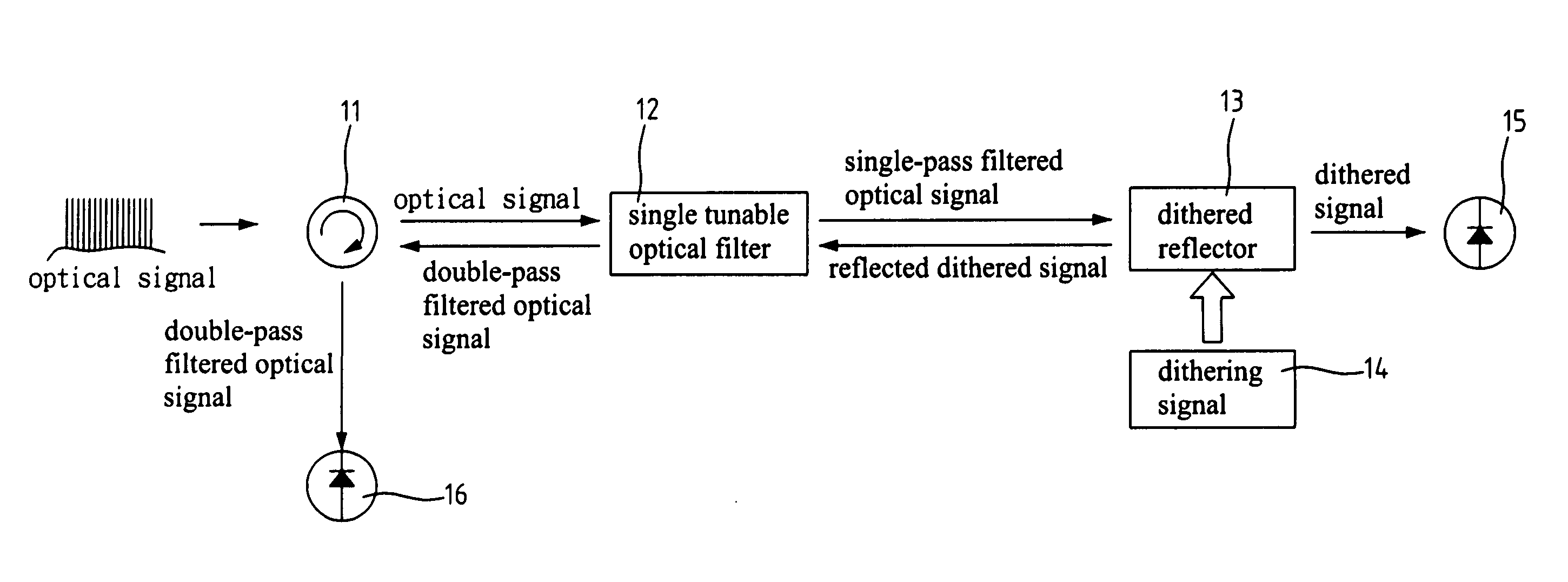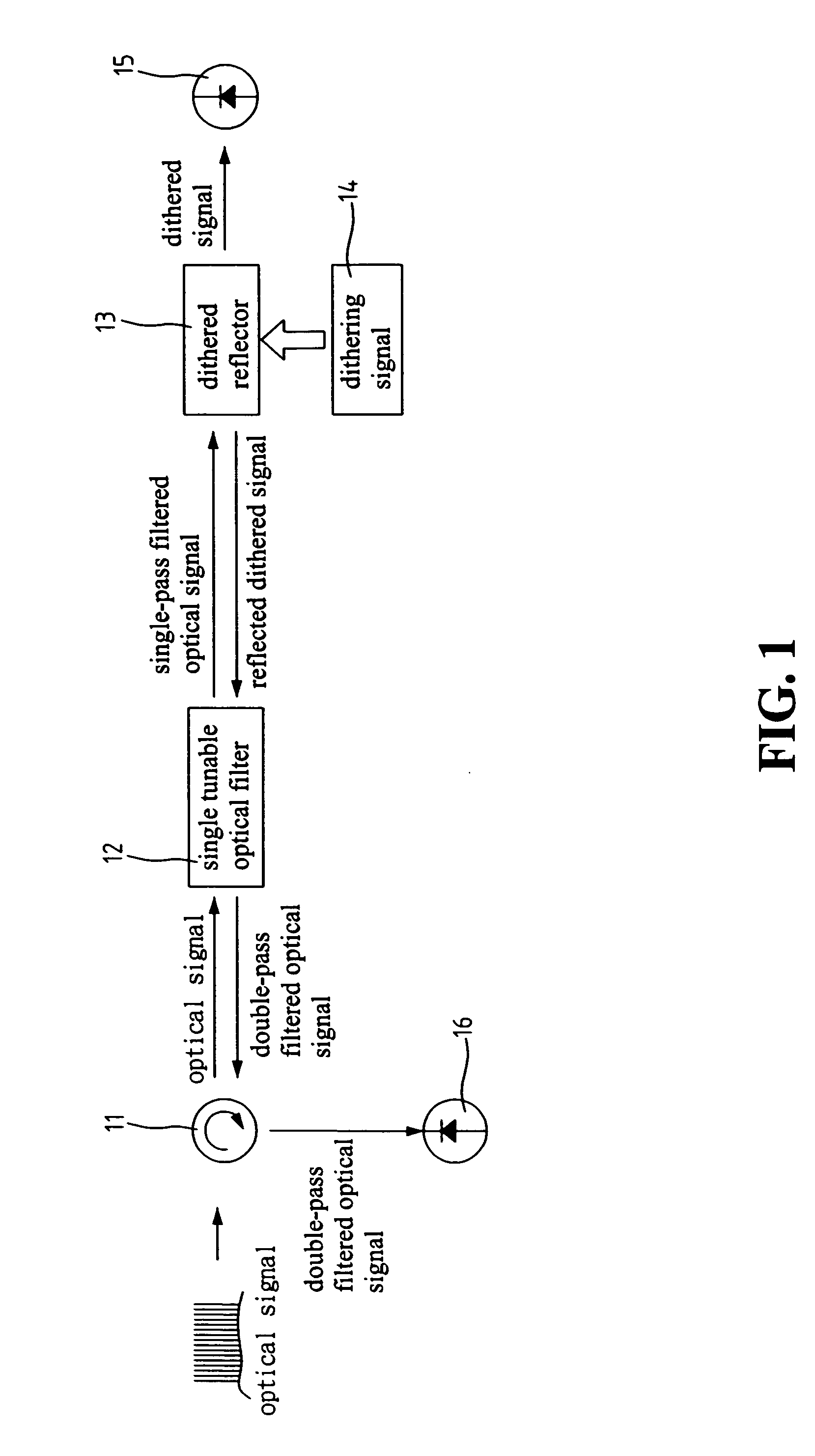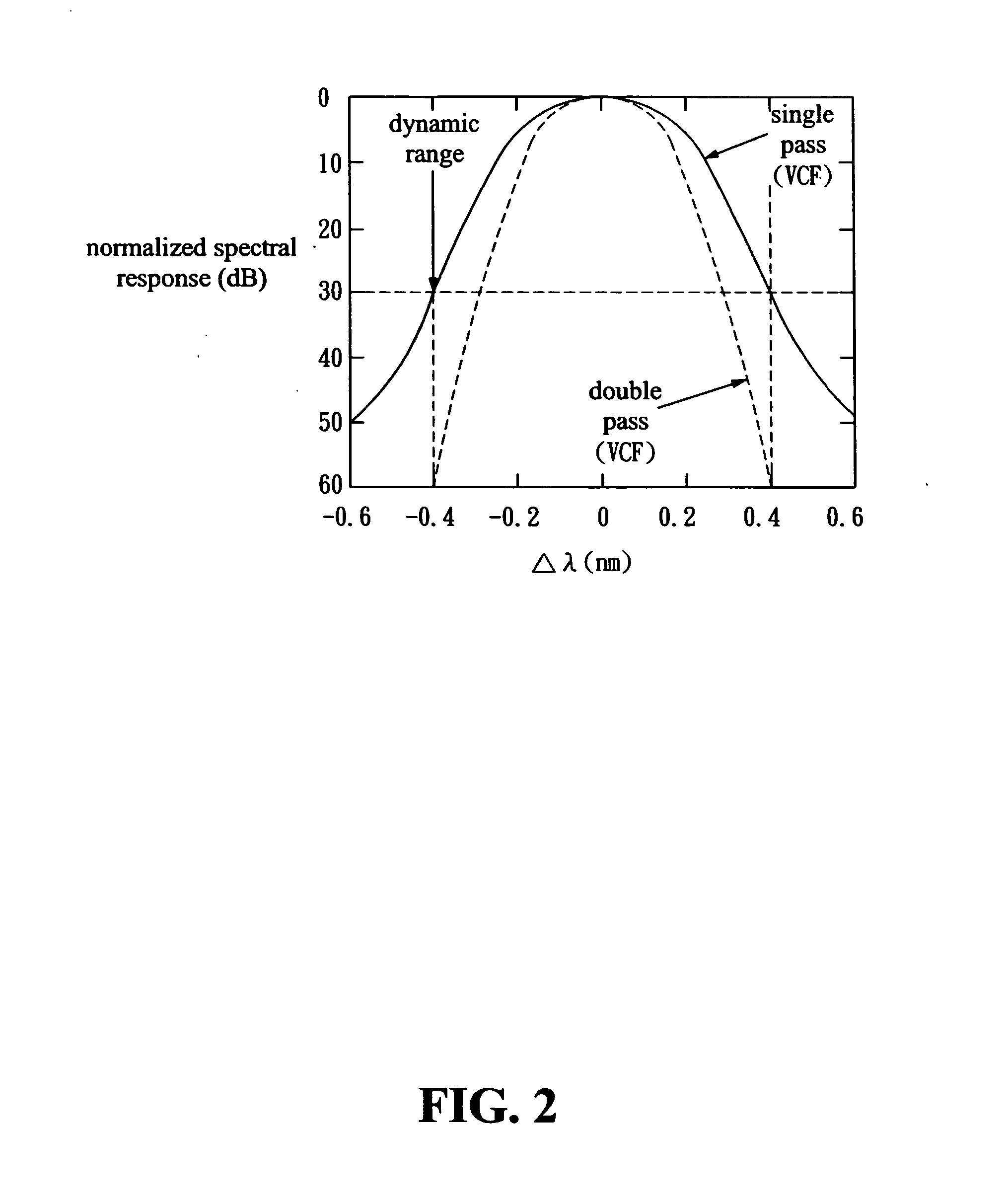Apparatus and method for monitoring optical signal-to-noise ratio
a technology of optical signal and signal to noise ratio, which is applied in the field of apparatus and a method for monitoring optical signal tonoise ratio (osnr), can solve the problems of deterioration of osnr, significant reduction of transmission efficiency of optical communication system, and amplification of noise accompanied with optical signal, so as to improve the detection sensitivity and dynamic range of two photodiodes, maintain noise power measurement accuracy, and improve the effect of osnr monitoring quality
- Summary
- Abstract
- Description
- Claims
- Application Information
AI Technical Summary
Benefits of technology
Problems solved by technology
Method used
Image
Examples
Embodiment Construction
[0026] The present invention improves the method of OSNR measurement proposed by Chappell. In Chappell's method, two different filters are used alternately. One filter with a wide enough RBW to accommodate the signal spectrum is adopted for measuring optical signal power. Another filter with a narrow enough RBW to reject adjacent optical channels is adopted for measuring noise power.
[0027]FIG. 1 is a block diagram of an OSNR monitoring apparatus according to the present invention. Referring to FIG. 1, the OSNR monitoring apparatus of the present invention comprises an optical circulator 11, a TOF 12, a dithering signal 14, a dithered reflector 13, and two photodiodes 15 and 16. The optical circulator 11 has a circular transmission function, which guides input signals from a communication system to a specified output trajectory. The TOF 12 has a bidirectional filtering function, which receives a signal (for example, DWDM signal) from optical circulator 11 and outputs a single-pass f...
PUM
 Login to View More
Login to View More Abstract
Description
Claims
Application Information
 Login to View More
Login to View More - R&D
- Intellectual Property
- Life Sciences
- Materials
- Tech Scout
- Unparalleled Data Quality
- Higher Quality Content
- 60% Fewer Hallucinations
Browse by: Latest US Patents, China's latest patents, Technical Efficacy Thesaurus, Application Domain, Technology Topic, Popular Technical Reports.
© 2025 PatSnap. All rights reserved.Legal|Privacy policy|Modern Slavery Act Transparency Statement|Sitemap|About US| Contact US: help@patsnap.com



